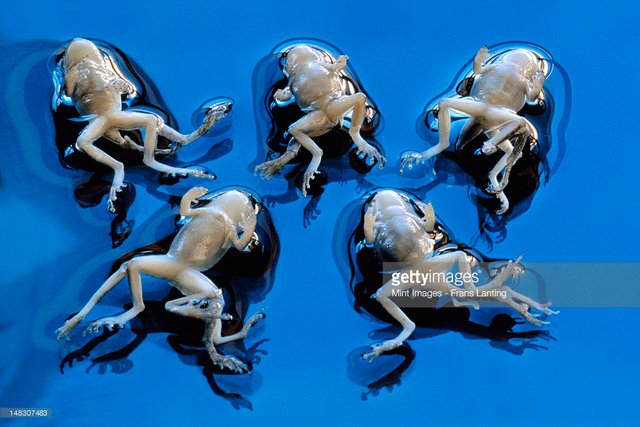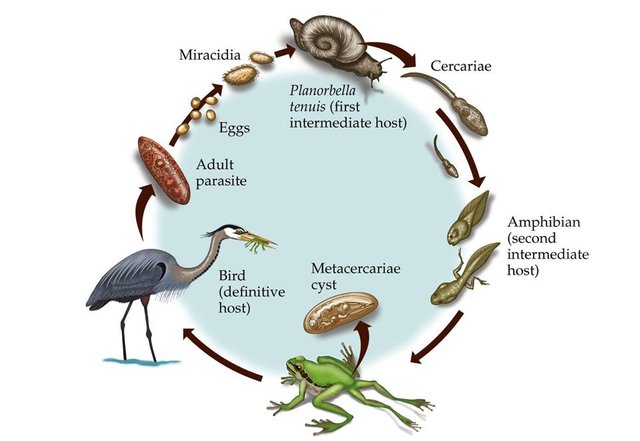Ribeioria- Cruel Scientist of the Parasite's World
All horror movies with fantastic radiation creatures or parasites from space pale in comparison with real-world examples. I bet that any fictional monster is the result of the author's inspiration by nature, with a few additions. Today we'll meet one of our creepy neighbors on the planet.
In the Early 90s, residents of the United States and Canada began to meet the frogs-mutants with extra paws. It is logical that most ordinary people believed that the cause of such anomalies was chemical pollution of water bodies. But, everything turned out not so scary, for people, not for frogs…

image soutce
The reason was quite natural in its origin - terrestrial parasite called Ribeioria. It is flat worms, whose life cycle is quite aggressive towards their carriers. The victims of the first and second phases are virtually no chances of survival after infection.
Phase 1
The parasite is born inside a usual snail, getting into her intestines along with earth, water or manure, which snail feeds on. The larvae, appeared inside the snail, are actively growing, develop and begin to multiply. In order for the carrier not to spend energy on mating and producing of own progeny proper, the larvae completely eat up his reproductive tissues.

Mature larva of Ribeioria image source
After 6 weeks, the strengthened larvae leave the body of the first carrier and go to the conscious search for the next victim. While inside the snail continue to reproduced all the new offspring Ribeioria, until her death.
Phase 2
The main objective as a second carrier is tadpoles or fish fry. Before getting into the victim's body, the parasite begins to produce a huge amount of retinoic acid.

image source
Molecule retinoic acid are the base for the growth of tissues in organisms of amphibians, amphibians and fish. They contribute to the fact that other cells in the body are actively growing, dividing and also produce retinoic acid and thus cause the growth and development of limbs.
That is why Ribeioria is looking for a specific victim. After penetration into the body of the tadpole, the parasite settles in the area of rudimentary legs and starts to produce accumulated retinoic acid into the body of the victim. As a result, the level of growth vitamins in the body of the tadpole increases by 70% (compared to the norm).

The surge of hormones leads to uncontrolled growth of extra limbs. Sometimes it looks like full legs, but more often only like stumps of legs.
Phase 3
This behavior of the parasite is exclusively the pursuit of the ultimate goal, not cruel experiments on frogs. As you can guess, the last, third carrier - mammals and large birds that feed on frogs.

image source
Laboratory tests showed that the extra paws (even developed normally, at first glance) make the frog an easy prey. Compared with healthy individuals, diseased frogs swim by 37% slower, their stamina 66% lower, and the length of the jump by 41% shorter.
Adult parasite settles in the intestine of its last owner. In the intestine Ribeioria will start to produce new eggs and mate with other adult individuals. New eggs are spread through the droppings of birds or mammals, then getting into the snail. The cycle repeats.

image source
***
For me, this type of parasites is the most terrible and amazing at the same time. Because it alters the carrier at the genetic level. After the parasite enters the body, it is impossible to reverse the effects that it exerts. At the same time, is a vivid example of how nature keeps the balance. The higher the speed of reproduction of a species, the more threats there are for controlling its population.

sources: Ribeiroia, Nat Geo, Retinoic acid, Amphibian deformities and Ribeiroia infection, Retinoic acid signalling during development images from Google Search.
 ,
,
Boss help upvote pls